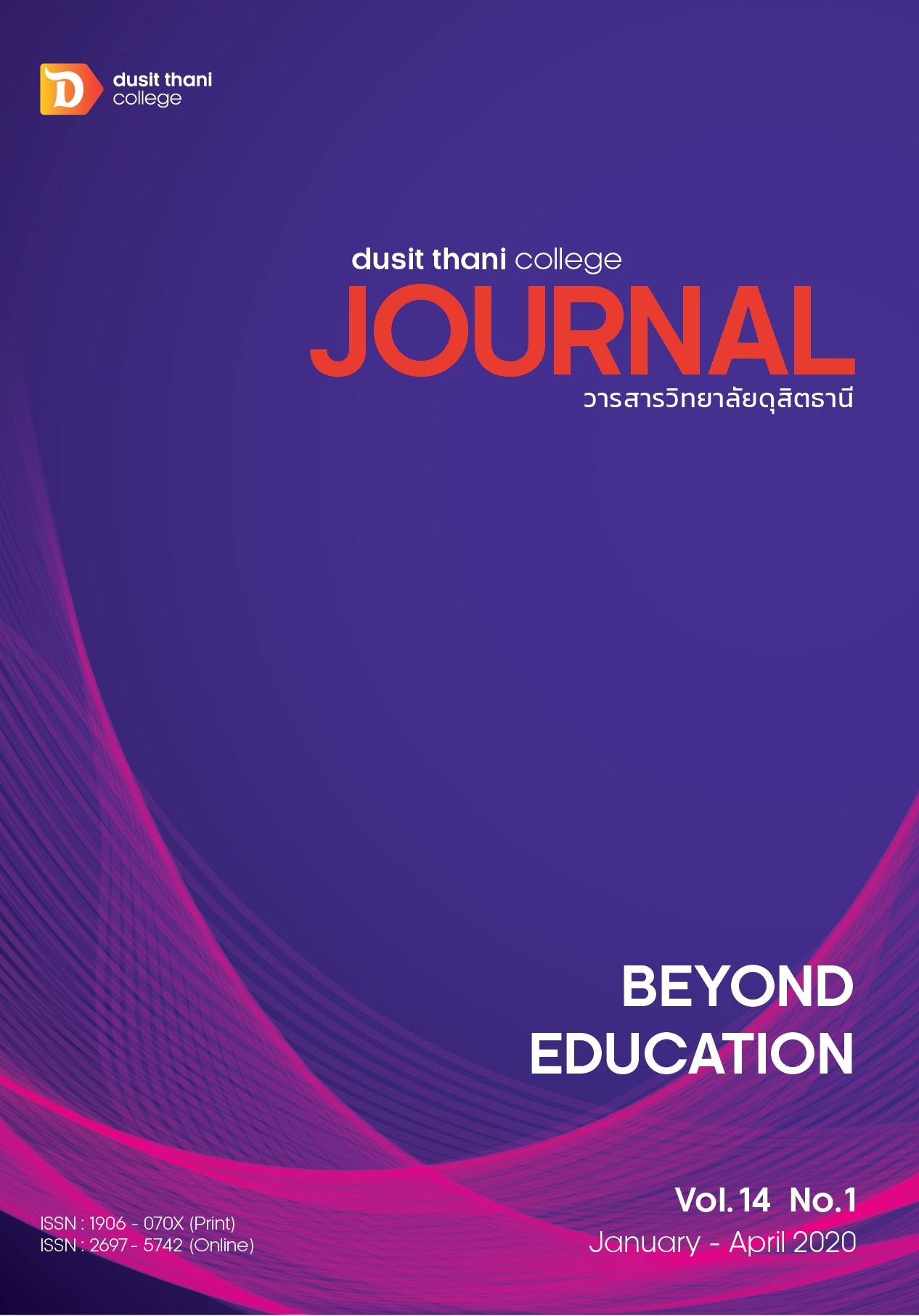The Effect of Integrated Marketing Communication on the Buying Decision of Halal Products View of Different Generation Customers in Bangkok
Main Article Content
Abstract
This research aims to study 1) demographic factors that affect the buying decision of Halal products 2) the integrated marketing communication factors that affect the buying decision of Halal products 3) the role of the generation (X, Y, Z) as a controlling variable between integrated marketing communication factors and purchasing intentions of Halal products. The total sample size of 388 people was drawn from people who were born in the year of 2508 B.E. onwards and live in Bangkok. This research is quantitative research. Data were collected via the developed questionnaire.
The research found that the analysis of odds ratio in which integrated marketing communication and generation variables influence the buying decision of Halal products. This can be classified by various types of integrated marketing communication tools including advertising, sales promotion, personal selling, direct marketing, sponsorships and event marketing or special events by using the generation of X, Y and Z as a control variable. In testing of the influence on the decision to buy Halal products, it was found that personal selling and Generation Z influenced the purchasing intentions of Halal products and personal selling and Generation Z had the higher odds ratio to make a decision to buy Halal products than Generation X and Generation Y at 0.406 times (odds ratio = 0.406) with statistical significance level of 0.05. it also found that direct marketing and Generation Z influenced the decision to buy Halal products, that is, the population of Generation Z who received marketing communication through direct marketing have a chance to make a decision to buy Halal products at 0.536 times (odds ratio = 0.536) of Generation X and Generation Y with statistical significance of 0.05
Article Details
Article Screening Policy
- All research and academic articles to be published must be considered and screened by three peer reviews in the relevant field / article.
- All articles, texts, illustrations and tables published in the journal are the personal opinions of the authors. Editors don't always have to agree. And no responsibility whatsoever is the sole responsibility of the author.
- The articles to be published must never be published. Where did you first publish? And not in the consideration of other journals If the audit found that there has been a duplicate publication It is the sole responsibility of the author.
- Any article that the reader sees as being plagiarized or impersonated without reference. Or mislead the work of the author Please let the journal editor know it will be your greatest blessing.
References
2. Thai Health Project (2016). Article title. Thai people's health 2016 (page number of the article). Nakhon Pathom: Institute for Population and Social Research Mahidol University 2016.
3. Chatjutha Nokchan. (2012). A Comparison of Work Motivation Factors between Generation X and Generation Y : A case study of Provincial Electricity Authority’s Employees. Journal of chandrakasemsarn. 34(18).
4. Decha Wattanapaisan et.al. (2014). A Study of Viewpoints and Expectations of Generational Characteristics between Generation X and Generation Y. Chulalongkorn Business Review. 36 (141).
5. Howard, J. A. (1989) Haward, J. A. (1994). Buyer Behavior in Marketing Strategy. New Jersey: Prentice Hall.
6. Kotler, Philip and Keller, Kevin Lane. (2012). Marketing Management, 14th edition. Harlow: Pearson Education.
7. Likert, R. A. (1932). Technique for the Measurement of Attitude. Archives Psychological. 3(1).
8. Porama Satawethin. (2003). Communication Arts. Bangkok:parbkarnpim.
9. Wuttisak Pitsuwan. (2005) Factors Affecting the Level of Significance given to the Halal Logo by Muslim Consumers in Making Purchase Decisions on Food Products: A Case Study of the Thai Muslims Living in the Four Most Southern Provinces. BU Academic Review, 4(1).
10. Siriwan Sereerat. (2007). Customer Behavior. Bangkok: Teerafilm and sitex.
11. Sit Teerasorn. (2008). Marketing Communication. Bangkok: Chulalongkorn University.
12. Shimp, T.A. (2003). Advertising, promotion: Supplemental aspects of integrated marketing communincations (5th ed.). Forth worth, Tex.: Dryden.
13. Somchai Worakitkasemsakul. (2011). Research Methodology in Behavioral Sciences And social sciences Research Methodology in Behavioral Sciences And social sciences. Udonthani: Aksornsil printing.
14. Takatoshi, l. (2004) Generativty as Social Responsibility: the Role of Generation in Society Contunuity and change.

